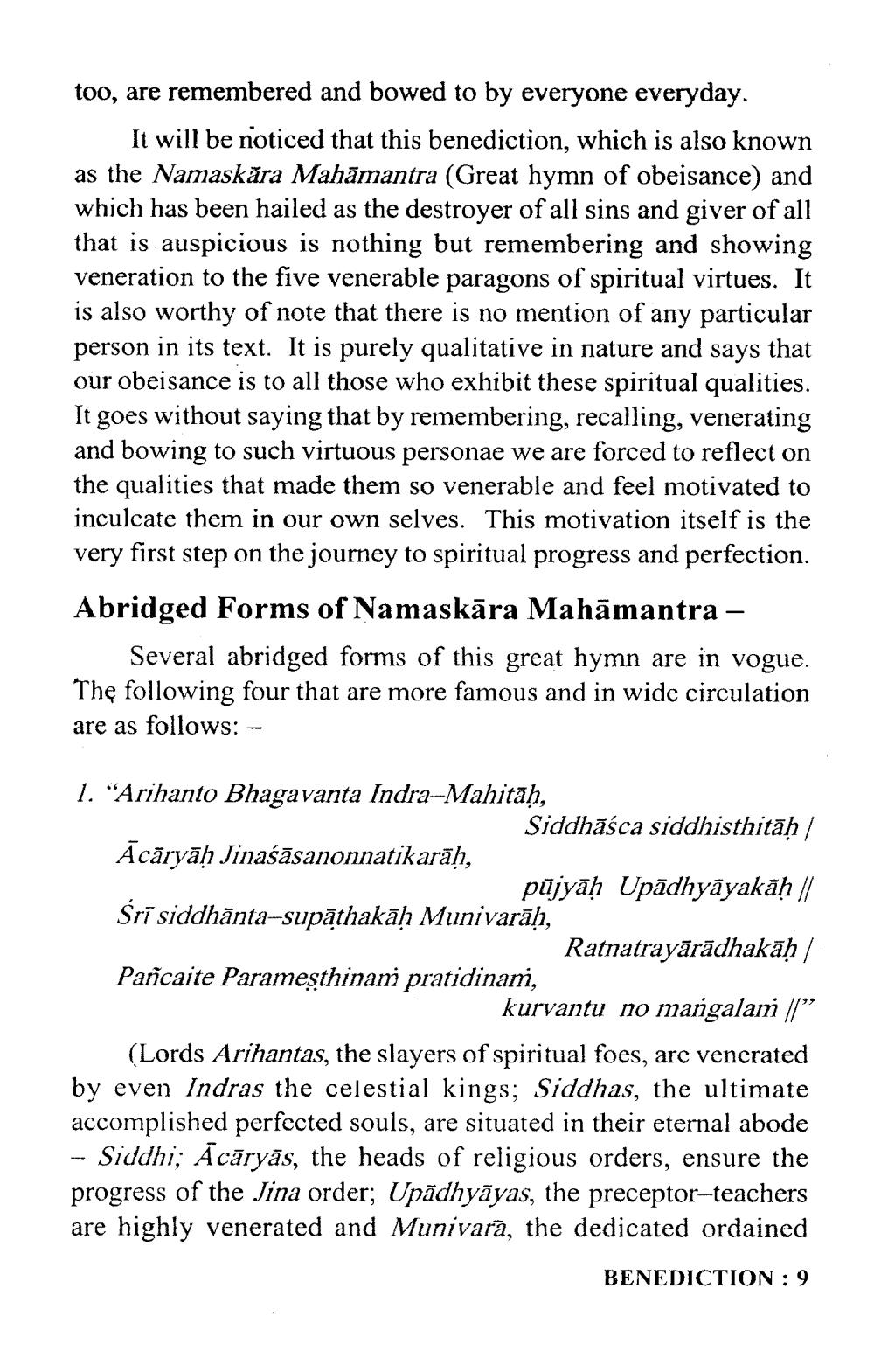________________
too, are remembered and bowed to by everyone everyday.
It will be noticed that this benediction, which is also known as the Namaskăra Mahāmantra (Great hymn of obeisance) and which has been hailed as the destroyer of all sins and giver of all that is auspicious is nothing but remembering and showing veneration to the five venerable paragons of spiritual virtues. It is also worthy of note that there is no mention of any particular person in its text. It is purely qualitative in nature and says that our obeisance is to all those who exhibit these spiritual qualities. It goes without saying that by remembering, recalling, venerating and bowing to such virtuous personae we are forced to reflect on the qualities that made them so venerable and feel motivated to inculcate them in our own selves. This motivation itself is the very first step on the journey to spiritual progress and perfection. Abridged Forms of Namaskāra Mahāmantra -
Several abridged forms of this great hymn are in vogue. The following four that are more famous and in wide circulation are as follows: -
1. “Arihanto Bhagavanta Indra-Mahitāḥ,
Siddhāśca siddhisthitaḥ/ Ācāryāḥ Jinaśāsanonnatikarā),
pūjyāḥ Upādhyāyakāḥ || Śrī siddhānta-supāthakāḥ Munivarāḥ,
Ratnatrayārādhakāḥ / Pascaite Parameşthinam pratidinam,
kurvantu no mangalami ll” (Lords Arihantas, the slayers of spiritual foes, are venerated by even Indras the celestial kings; Siddhas, the ultimate accomplished perfected souls, are situated in their eternal abode - Siddhi; Ācāryās, the heads of religious orders, ensure the progress of the Jina order; Upādhyāyas, the preceptor-teachers are highly venerated and Munivarā, the dedicated ordained
BENEDICTION : 9




